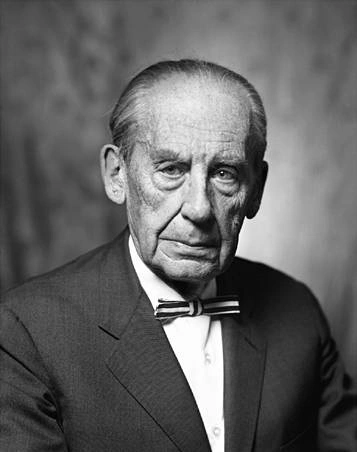Walter Gropius Walter Gropius (1883-1969), German American architect and educator, who founded the Bauhaus, a German art school that became a seminal force in architecture and applied art during the first half of the 20th century.
Publié le 12/05/2013

Extrait du document

Walter Gropius Walter Gropius (1883-1969), German American architect and educator, who founded the Bauhaus, a German art school that became a seminal force in architecture and applied art during the first half of the 20th century. His central thesis, which served as the school's guiding principle, was that design (in any of its forms) should be functional, based on a wedding of art and engineering. This concept, expressed in his buildings, had a profound influence on modern architecture. Walter Adolph Gropius was born in Berlin on May 18, 1883, and studied architecture in Munich and Berlin-Charlottenburg. From 1907 to 1910 he worked in the offices of the German pioneering functional architect Peter Behrens in Berlin. In 1911 he joined the Deutscher Werkbund (German Work Union), formed to ally designers with machine production. Working with Adolph Meyer, he designed the Fagus Works in Alfeld (1910-11) and the office building for the Werkbund exhibition in Cologne (1914), which made his name known throughout Europe. After World War I he became director of two Weimar art schools. Reorganizing them in 1919 as the Staatliches Bauhaus (State Building School), he introduced a new approach to design education that emphasized the principle of uniting art and technology; students received a basic crafts training to gain an acquaintance with materials and processes. This method, which led to a heightened awareness of the realities of production, virtually revolutionized modern design. When the school was moved to Dessau in 1925, Gropius designed its buildings. They are marked by simplicity of shape, elimination of surface decoration, and the extensive use of glass. Gropius resigned as director of the Bauhaus in 1928 to return to private practice. Opposed to the Nazi regime, he left Germany secretly in 1934, and after several years in England, he went to the United States to join the architecture faculty of Harvard University. As head of the department (1938-52), he introduced the Bauhaus concepts and helped to shape a generation of American architects. In 1946 he formed a group called the Architects Collaborative, which executed many important commissions, including the Harvard Graduate Center (1949), the U.S. Embassy in Athens (1960), and the University of Baghd?d (1961). He designed the Pan Am Building (1963) in New York City in collaboration with the Italian American architect Pietro Belluschi. Gropius died in Boston on July 5, 1969. Microsoft ® Encarta ® 2009. © 1993-2008 Microsoft Corporation. All rights reserved.
Liens utiles
- Ludwig Mies van der Rohe Ludwig Mies van der Rohe (1886-1969), German American architect, the leading and most influential exponent of the glass and steel architecture of the 20th-century International style.
- Marilyn Monroe Marilyn Monroe (1926-1962), American motion-picture actor, who became the most famous international sex symbol of the 20th century.
- Baroque Art and ArchitectureIINTRODUCTIONGerman Baroque ArchitectureThe baroque style of architecture flourished in Germany in the 18th century.
- Mesopotamian Art and Architecture I INTRODUCTION Mesopotamian Art and Architecture, the arts and buildings of the ancient Middle Eastern civilizations that developed in the area (now Iraq) between the Tigris and Euphrates rivers from prehistory to the 6th century BC.
- Elvis Presley Elvis Presley (1935-1977), American singer and actor, one of the most popular and influential entertainers of the 20th century.



